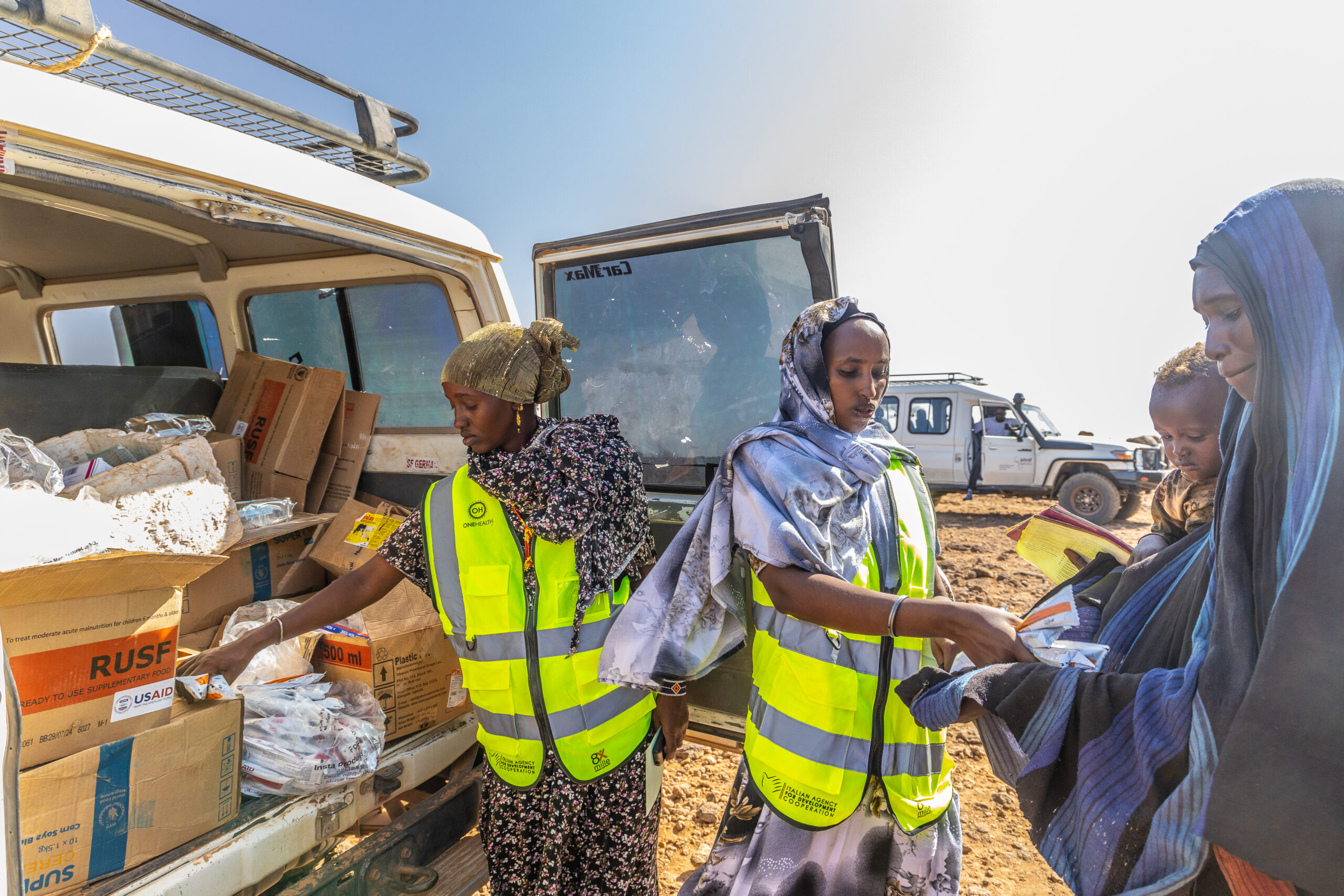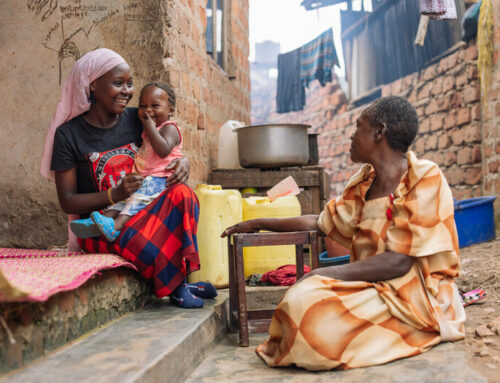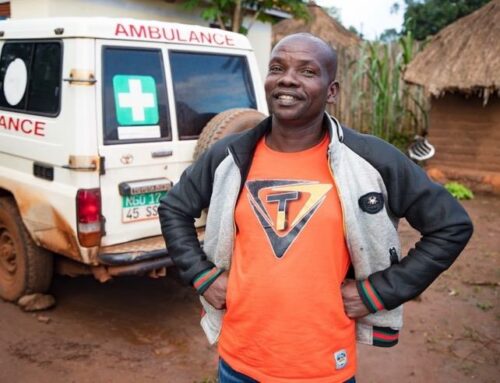Field Updates
Meet Kame, A Public Health Specialist working during a climate crisis
Story by Wesley Koskei
Unlike our traditional community health outreach, the HEAL project focuses on providing health services to livestock and humans. This is crucial since the lives of the people the project serves in Northern Kenya are closely linked to the well-being of their animals. Through the project, preventing diseases and curing animal diseases that could interfere with the milking herd, which provides much-needed nutrients to families, is just as essential to providing nutritional and primary health care to men, women, and children.
“We conduct human and animal health outreaches. This is where humans are served, and animals are also served. On the part of the humans, we offer services like immunization of their children and minor consultations for pregnant mothers and lactating mothers. Their health is connected with the animals because if they get sick, they also get affected, and the same applies to the environment. So the importance of this integrated outreach is bringing together human and animal health and not forgetting the environment,” says Kame, a public health specialist.
Her role involves providing essential health services to the communities living in some of the most remote areas in Kenya. “The mobile outreach goes to the hard-to-reach areas where there’s no health facility. It goes to places where mothers need much help, especially pregnant mothers, and children who cannot move the distance. Most mothers deliver at home, and the only time they can access pre or post-natal care is during the community health outreaches. Some places we [serve] are more than 20 miles from the nearest health center. So, bringing health services to them is like carrying a whole hospital.”
As extreme weather and climate events, such as drought, increase, these communities become more susceptible to adverse health impacts. Surging demand for healthcare due to the impacts of drought strains the capacity of health systems to address increasing hazards, such as malnutrition or disease outbreaks.
“Cases of malnutrition are on the rise,” Kame says. “Those who are admitted to the supplementary program, are supposed to be discharged after three months, but with the drought, you can find that the child can stay in the program for many months. The rate of malnutrition is very high in this area, especially among women, those who are lactating, pregnant mothers, and children under five. Most pregnant women can’t even get the nutritional content they received before the drought, especially regarding meat and milk, because there’s nothing to eat.”
This is why we’re pushing for help to train more healthcare workers. The demand for services is high, and with climate crises occurring more frequently, how we approach healthcare needs to be integrated and even more community-specific. As Kame says, “Health specialists are needed urgently in this critical drought condition. They are really important, especially to this community. It really affects me personally because those mothers are raising this country’s future.”
Help us train more health workers to bring care to those who need it the most!
Photos of Kame bringing care to an area heavily impacted by the drought! Photo Credit: Tony Wild
See for yourself! Watch A Day in the Life: Meet Kame & Guyo on the frontlines of the Drought in Kenya! Video Credit: Wesley Koskei







